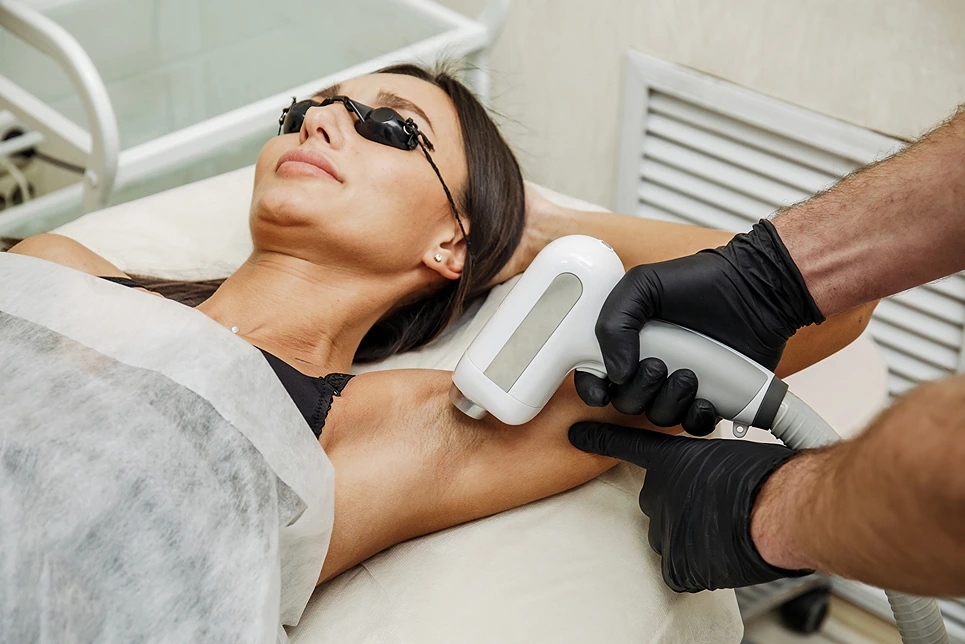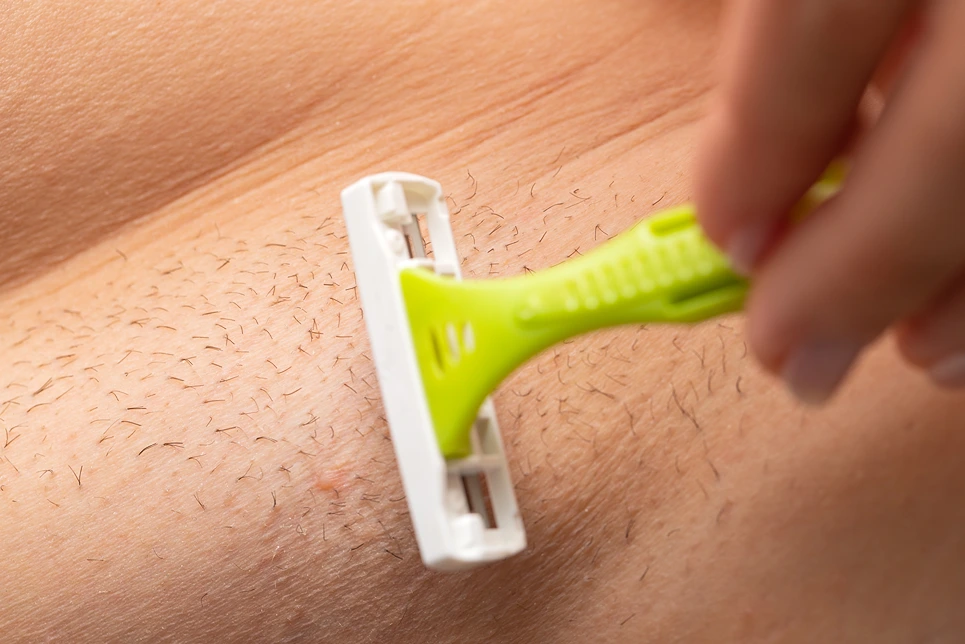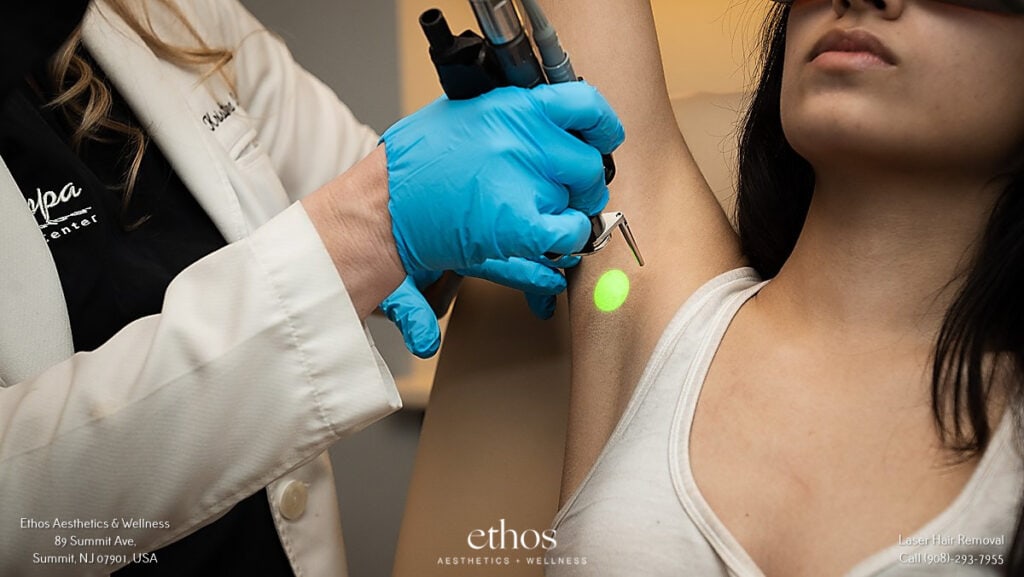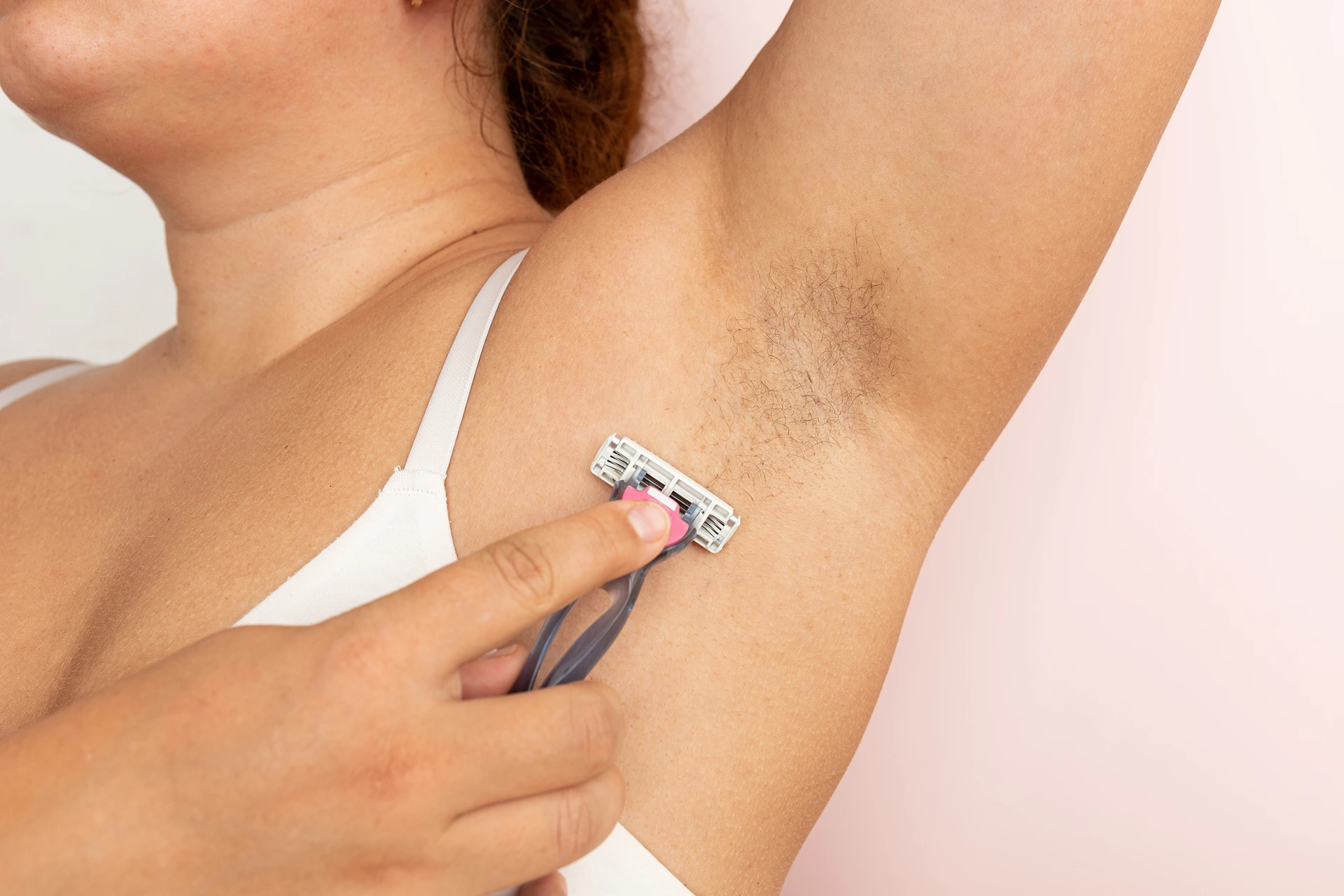Laser Prep 101: Why Shaving Makes All the Difference
Before jumping into those laser appointments, it’s important to know how to properly prep your skin to get the best results.
One of the most common pre-treatment steps is shaving, which leads many to ask: Do you really have to shave before laser hair removal?
The short answer is YES.
Shaving before treatment is highly recommended by aesthetic professionals. But why is that, and what are the benefits? Let’s get into the details.
How Does Laser Hair Removal Work?

First, it helps to understand what happens during a laser hair removal treatment.
Laser hair removal utilizes concentrated beams of light that selectively target melanin in the hair follicles beneath the skin’s surface.
The light energy gets absorbed by the melanin, which generates heat and essentially damages the follicle so hair cannot regrow.
The lasers used in hair removal only affect the pigmented hair shafts and follicles. The surrounding skin is not impacted. So the treatment precisely removes hair without damaging the skin.
Some key advantages of laser hair removal include:
- Long-lasting hair reduction when completed over multiple sessions
- Highly targeted approach with minimal side effects
- More precise than traditional hair removal methods like shaving or waxing
- Little to no downtime required after treatment
Now that we understand the technology behind laser hair removal, let’s look at why proper preparation – especially shaving – is so important.
Why Should You Shave Before Laser Hair Removal?
Shaving prior to laser treatment is recommended for two main reasons:
1. Less discomfort and risk of side effects
Laser hair removal can cause a stinging or prickly sensation as the light pulses target the follicles. Many patients say it feels like a rubber band snapping against the skin.
If the surface hair is not removed, the laser will heat up and burn those hairs off first. This can actually amplify the painful sensations. It also increases the risk of skin irritation, redness and swelling after treatment.
By shaving ahead of time, there is less hair for the laser to burn on the surface. This greatly reduces discomfort during the session.
2. Better results
In order to effectively penetrate the skin and reach the follicles beneath, the laser light needs to pass through the surface of the skin without obstruction. Existing hair above the skin will block some of the laser energy from reaching the follicle below.
Removing the surface hair through shaving allows for maximum laser light penetration. This means more follicle-damaging heat can reach the root for better results.
Studies show that patients who shave before laser hair removal achieve better hair reduction over the course of their full treatment plan. The hair follicles are more effectively disabled when not shielded by surface hair during the laser session.
When Should You Shave Before Laser Hair Removal?
To get the full benefits, it’s important to shave at the right time prior to your appointment. Here are some general guidelines on timing:
- Shave 24-48 hours before laser treatment. Shaving 1-2 days ahead ensures the hair has enough time to grow out just slightly while avoiding significant regrowth.
- Avoid shaving right before. Shaving immediately before a laser can lead to skin irritation and sensitivity. Give your skin a chance to recover from shaving before exposing it to lasers.
- Don’t shave too far in advance. If you shave more than 2-3 days prior, the hair may grow out too much, blocking the laser. Stick within the 24-48 hour window.
- Schedule your shave according to hair growth. The ideal length is about 1mm. Take into account your specific hair growth rate to achieve this length.
Getting the timing right ensures the hair is long enough for the laser to interact with the follicle, but short enough not to impede penetration to the root.
What Hair Removal Methods Should Be Avoided?
While shaving is encouraged, there are some hair removal methods you should avoid in the weeks before laser treatment:
- Waxing/Sugaring – These techniques can disturb the hair follicle and skin, making treatment less effective. Avoid waxing/sugaring for 4-6 weeks pre-treatment.
- Plucking/Tweezing – Plucking removes the hair bulb, so there is nothing for the laser to target. Avoid plucking/tweezing for 4-6 weeks.
- Chemical Depilatories – Depilatory creams can irritate the skin and alter pigmentation, interfering with the laser. Stay away from these for 4-6 weeks beforehand.
- Electrolysis – This permanently destroys hair follicles, so avoid it when undergoing laser therapy.
It’s also critical to avoid sun exposure and tanning for 4-6 weeks before laser. Tanned skin contains more melanin, which can interfere with the laser’s effects and may increase side effects.
To Shave or Not to Shave: Weighing the Pros and Cons

Now that we know the basics, let’s do a deeper dive into the debate: is it really necessary to shave right before laser hair removal? What are the potential risks and downsides to shaving pre-treatment?
Here’s an overview of the key pros and cons:
| Pros of Shaving Before Laser Hair Removal | Cons of Not Shaving Before Laser Hair Removal |
| Minimizes pain and discomfort during treatment | Surface hair blocks some of the laser light from properly reaching the follicle |
| Allows maximum laser penetration to the follicle | Can lead to increased pain and burning sensations during the session |
| May reduce risk of temporary side effects like redness and swelling | May heighten risks of post-treatment side effects |
| Results in greater long-term hair reduction over entire treatment course | Can result in less effective disabling of the hair follicles and growth centers |
Expert Opinions
An article from the American Society of Plastic Surgeons (ASPS) states that shaving prior to laser hair removal is recommended.
Most dermatologists and laser hair removal specialists agree that shaving before treatment provides the best results and least discomfort. Some may allow very fine vellus hair growth, but insist that any coarse terminal hairs be removed.
Overall, the consensus among aesthetic professionals is that shaving benefits your laser hair removal process. While not absolutely mandatory, it is very advisable.
Post-Treatment Care
While shaving preparation is important, don’t neglect proper aftercare as well. Here are some tips for caring for your skin after laser hair removal sessions:
Immediately After Treatment
- Avoid hot baths, showers, hot tubs, and saunas for 24 hours
- Don’t expose treated areas to direct sunlight for a few days
- Apply aloe vera gel and other soothing creams as recommended
- Use cool compresses if needed to relieve tenderness and swelling
Long-Term Aftercare
- Be diligent about SPF protection when going outside
- Moisturize daily and hydrate skin to aid healing
- Avoid picking, scratching or irritation of treated areas
- Refrain from activities causing excessive sweating for a few days
Proper aftercare allows the disrupted hair follicles to heal while minimizing risks of complications after laser therapy. Be sure to get your provider’s specific post-treatment instructions.
Common Questions About Shaving & Laser Hair Removal
If you’re considering laser hair removal, you probably still have plenty of other questions. Here are answers to some frequently asked questions about the role shaving plays in the process:
How much does it hurt to shave before laser hair removal?
Shaving itself should not be significantly more painful when done properly in preparation for laser treatment. Use a clean, sharp razor and shave in the direction of hair growth to minimize discomfort. Avoid aggressive razors with multiple blades. The skin may have some sensitivity immediately after, but this settles within a few hours.
Can I get waxed instead of shaving before my appointment?
Waxing is not recommended in the weeks prior to laser therapy because it irritates the skin and alters follicles. Stick to shaving within the 24-48 hour window before your visit.
What’s the ideal hair length to shave to?
Most experts advise shaving to stubble about 1 mm long. This allows enough hair for the laser to work effectively but not long enough to impede penetration. Consider your individual hair growth patterns to time your shave accordingly.
How many laser sessions will I need?
Most patients require 6-8 sessions spaced 4-6 weeks apart for optimal long-term hair reduction. Treatment plans are tailored to your individual hair and skin characteristics.
What areas of the body can be treated with laser hair removal?
Laser hair removal can be effective on most areas, including the:
- Face – Lip, chin, cheeks, jawline
- Neck
- Underarms
- Arms
- Hands
- Fingers
- Chest
- Stomach
- Back
- Bikini line
- Legs
- Feet
- Toes
- Buttocks
The exception is eyelashes, which should not be treated as the laser can damage the eye. Always consult your provider about your desired treatment areas.
Does laser hair removal work for all skin types?
Laser hair removal is safe and effective across different skin tones, including fair, olive and brown skin. The laser settings and wavelength can be adjusted based on your specific skin type to deliver the best results.
Is laser hair removal permanent?
While often referred to as “permanent hair reduction,” laser therapy does not completely eliminate the potential for hair regrowth. Most patients enjoy extended periods of hairlessness or minimal regrowth.
But results depend on your individual characteristics and adherence to the full treatment plan. Some maintenance touch-ups may be needed over time.
Does laser hair removal work on gray or white hairs?
Since the laser targets pigment in the hair bulb, it is not effective on white or gray hairs that lack melanin. However, laser can successfully treat darker hairs. For stubborn gray regrowth, alternative options like electrolysis may be better.
How much does laser hair removal cost?
The average cost per session ranges from $200-$500 depending on the size of the treated area. Smaller areas like the upper lip cost less than large areas like the legs. Many practices offer discounted packages for multiple sessions purchased upfront.
Takeaway: The Power of Pre-Treatment Prep
Now that you know the scoop on pre-treatment shaving and have answers to your top questions, it’s time to get started with laser hair removal if you’ve been considering it.
When performed properly over a series of sessions, laser hair removal can free you from frustrating, tedious methods like shaving and waxing. The key is making sure you prep your skin correctly prior to each visit.
Shaving before laser hair removal plays an important role in minimizing discomfort, reducing risks, and setting you up for optimal results. While not mandatory, it is highly recommended by dermatology professionals.
Take the First Step: Book Your Consultation at Ethos Aesthetics + Wellness

Discover how easy and effective laser hair removal can be. Visit us at Ethos Aesthetics + Wellness to kickstart your transition to effortlessly smooth skin. Our experts are ready to tailor a treatment plan that aligns with your skin care goals. Book your consultation now and move closer to a future free from the hassle of shaving and waxing.







